
Hanoi city and its old quarter
- on Oct 13, 2020 By: Ngoc Nguyen
Hanoi of yesteryear
It was during the Ly-Tran period (11th-14th centuries), the two most prosperous dynasties in Vietnam's history, that the first pages of the history of the capital Hanoi were written. This is closely linked to the transfer of the capital of Hoa Lu to Dai La in 1010 by King Ly Thai To who baptized it Thang Long (Dragon taking flight). The name "Hanoi" owes to Emperor Minh Mang who renamed it in 1831.
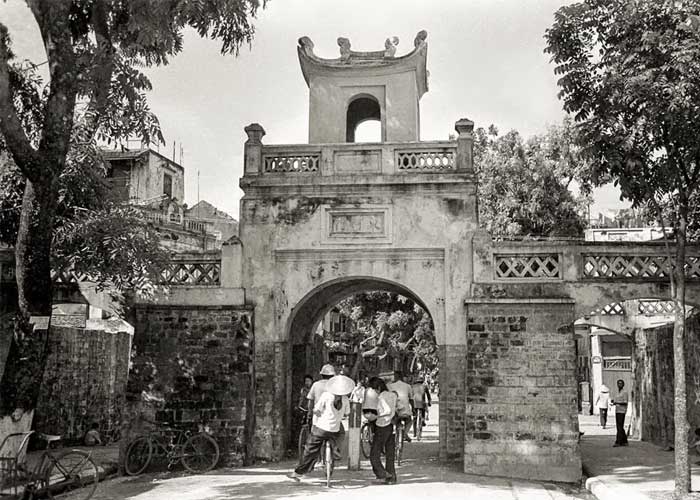
The O Quan Chuong Entrance Gate, a vestige of Thang Long Citadel
North of Hoan Kiem Lake (Lake of the Restored Sword), stretches the Old Town, bounded by the Citadel to the West, the Dong Xuan Market to the North and the ramparts of the Red River to the East. To the South and Southwest of the lake lies the New Town, a legacy of colonial times, housing many Western-style buildings. On one side are the narrow streets and alleys, low mossy houses where small traders bustle day and night and on the other are beautiful colonial monuments which exude an undeniable elegance. These two facets complement each other harmoniously like an extraordinary architectural museum.
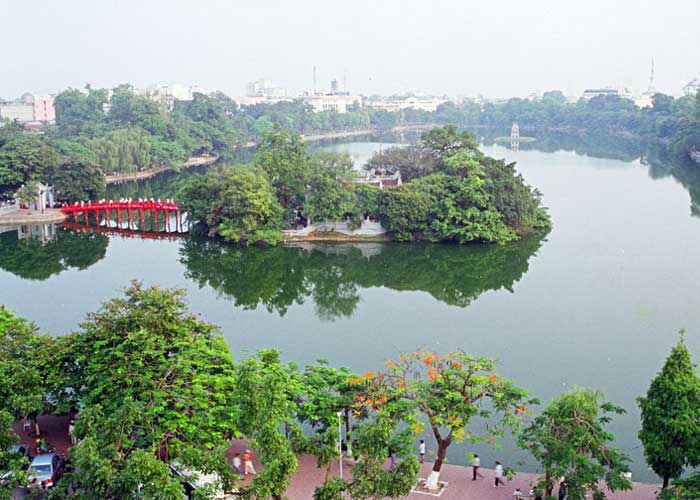
The beating heart of the capital, the old quarter where many corporations were established during the 15th century, is nicknamed "the district of 36 streets and corporations". At the time, the capital Thang Long witnessed the influx of merchants from surrounding villages and other provinces who went there to seek their fortune. This is where a city shopping centre is anchored, bringing together all activities, each of which is located in a street bearing the name of the merchandise manufactured or sold there. Hang Duong (Sugar street) is known for its sugar shops. The same goes for the other streets: Hang Bac (silver street), Hang Gai (stem street), Hang Vai (fabric street), Hang Chieu (mat street)… Tradesman or craftsman, more and more people settled there, with their skills to earn a living first and were led to stay there for a long time.
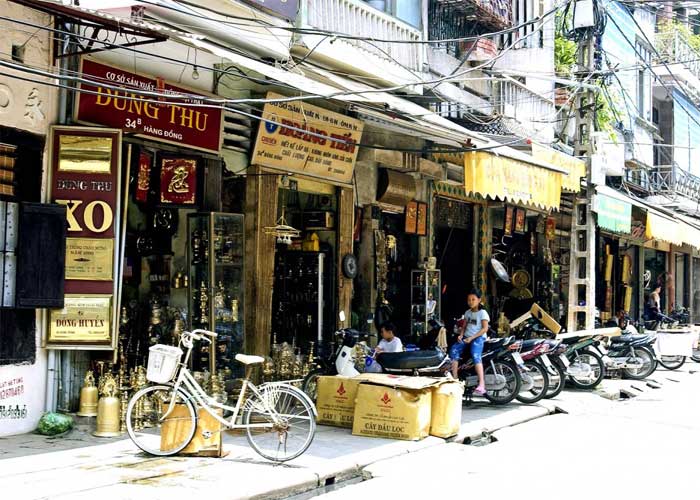
Hang Dong - Street of copper and bronze moulders
In addition to their activity, they also continue to preserve their way of life attached to the rural community, whether in behaviour, cooking or in religious and festive customs. It is not surprising that while strolling along the alleys, visitors from time to time see a temple, a pagoda or a communal house... as a witness to ancestral culture.
During the Le Dynasty, Chinese merchants arrived there marking the presence of some Chinese streets in the old quarter. During colonial times, the French gave Hanoi a whole new face with major interventions in urban infrastructure. Sidewalks, concrete streets, lighting systems, and French-style buildings have appeared alongside traditional buildings.
With the appearance of traders from France and India, the colours and animation of the district have diversified and amplified considerably. Two small markets were taken over to make way for a new large one, the Dong Xuan market.
>> Read more: The old quarter of Hanoi in 1959 from all angles
The Vietnamese capital today
Through the ups and downs of its history, the capital today has transformed enormously, but the old quarter still captivates visitors with its exceptional centuries-old charm.
In the Hoan Kiem district where the old quarter is located, the name “Hang” remains clearly visible in 47 streets out of the total of 76 existing streets. Some of them have remained true to their original business for centuries such as Hang Ma - (street of votive objects in paper), Hang Tre (street of Bamboo), Hang Thiec (street of tinsmiths)... Many others have changed their activities, but they specialise in the sale of specific products such as Hang Quat - cult products, Hang Buom - jam, Ma May - tourist service...
Colourful on weekends, the old quarter of Hanoi is especially appreciated for its pedestrian area and its night market where walkers, merchants and visitors from all corners and of all ages meet. Street shows and events, contemporary or folk, all have their place to please residents and guests...
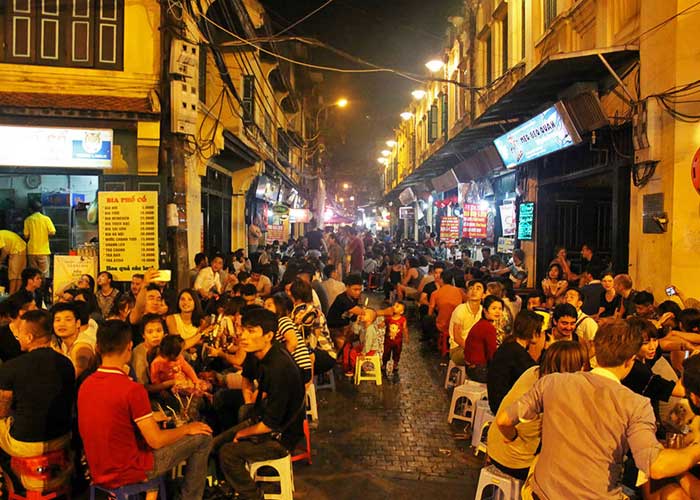
Street food, a typical Hanoi trait
It is in the heart of the capital that one can experience one of Hanoi’s finest delicacies, street food. Delicious and well-varied, its dishes are widely appreciated by travellers all over the world, especially for famous names like “pho”, “bun cha”, “banh cuon”, “nem”… In the old quarter of Hanoi, do not miss its gastronomic streets in full effervescence, whether in chic restaurants or in the canteens on the sidewalk. If Hanoi is one of the best gastronomic destinations, it is the old quarter that you must go to for a gourmet stay, from delicious specialities to popular dishes.
What to visit in Hanoi?

Dong Xuan market
The imprints of the thousand-year-old history of the capital are revealed in the must-see sites such as Hoan Kiem Lake, Tran Quoc Pagoda, the Temple of Literature, Dong Xuan market, but also in many others in the heart of its old quarter, such as the O Quan Chuong Entrance Gate, the old house at 87 Ma May Street, the Kim Ngan communal house, the Bach Ma temple, the Long Bien bridge or Paul Doumier bridge...
Related articles:
>> Visit Hanoi aboard a Hop On Hop Off bus
Comment
Other Blog
Categories
Latest News
on 31 Dec, 2025
on 31 Dec, 2025
 Español
Español Français
Français






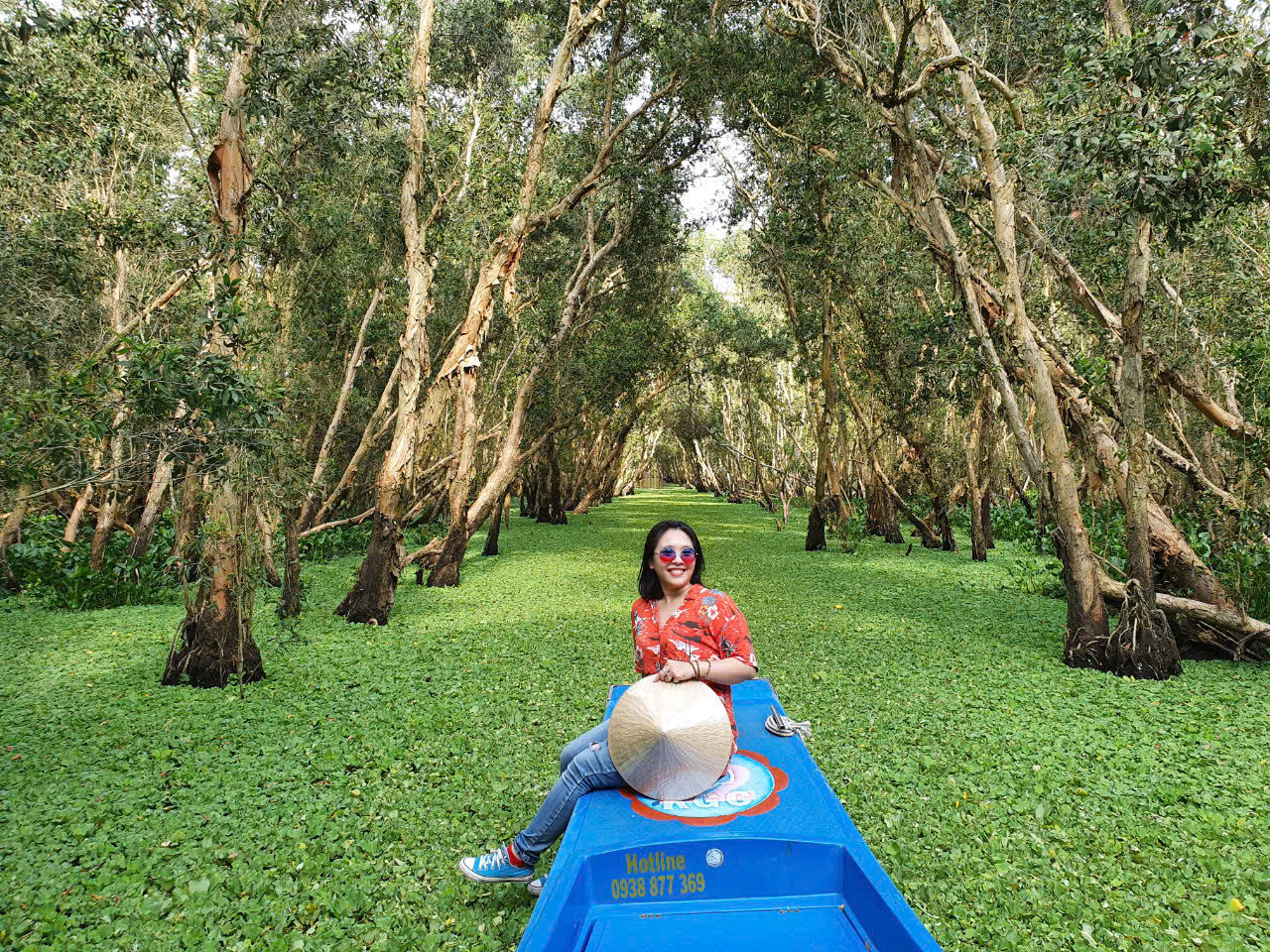
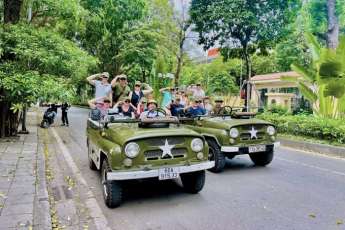

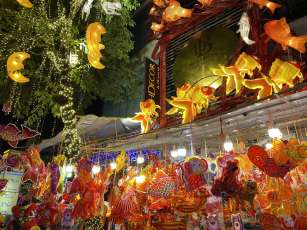










Morgane Ter Cock
on Dec 18, 2025HerbertPhomaMS
on Oct 19, 2025Lilyan Cuttler
on Oct 15, 2025Avenue17XC
on Sep 14, 2025Avenue18JL
on Jul 21, 2025